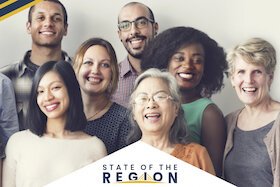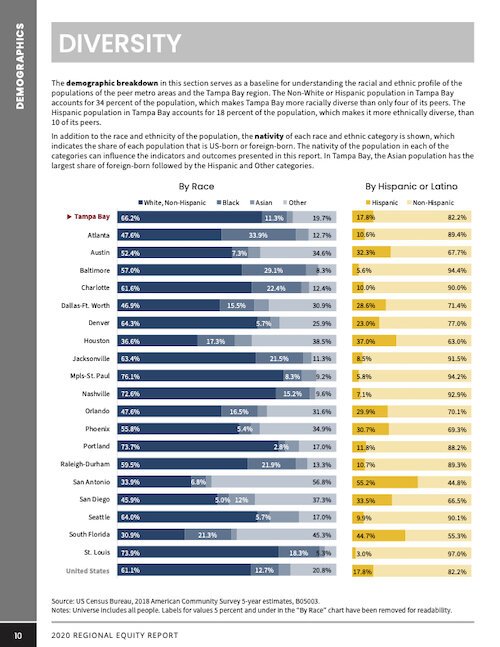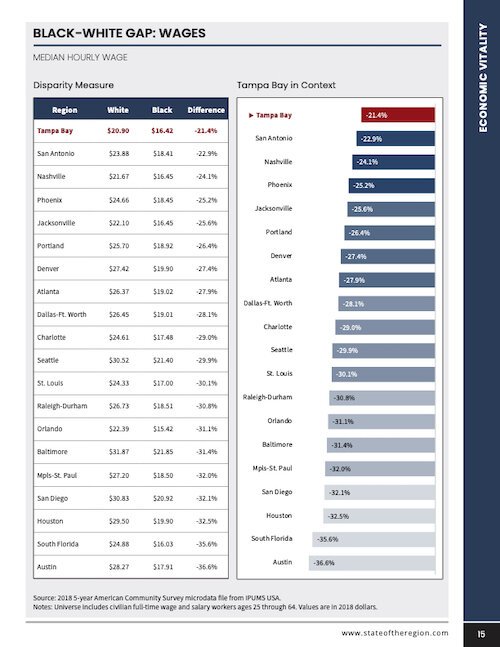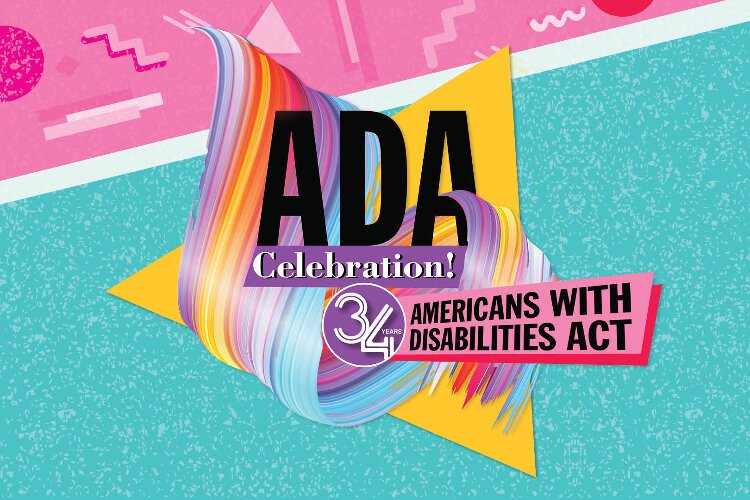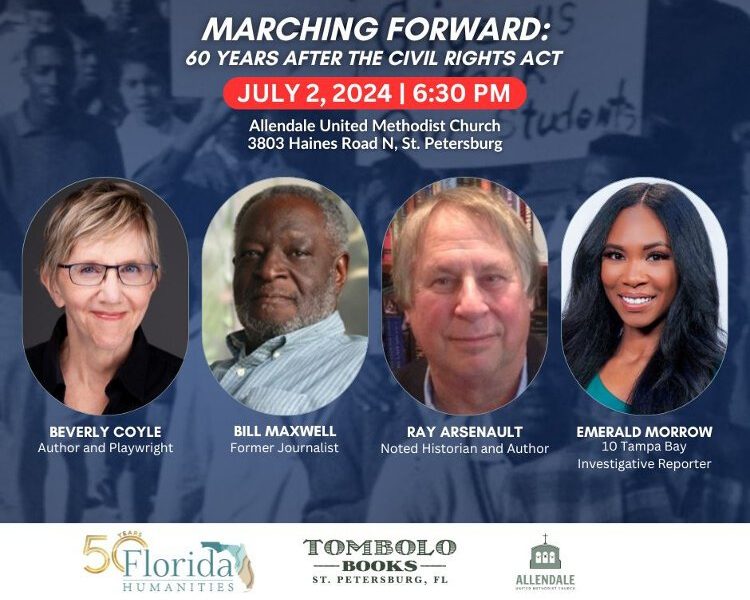Report outlines economic inequities in Tampa Bay Area
The 2020 Regional Equity Report, released by the Tampa Bay Partnership in collaboration with the Community Foundation of Tampa Bay and United Way Suncoast, reveals dramatic inequities for the region’s Black residents, both within Tampa Bay and compared to a set of 19 benchmark communities across the country.
The 2020 Regional Equity Report, released by the Tampa Bay Partnership in collaboration with the Community Foundation of Tampa Bay and United Way Suncoast, reveals dramatic inequities for the region’s Black residents, both within Tampa Bay and compared to a set of 19 benchmark communities across the country.
An analysis of 21 indicators related to economic vitality, talent, infrastructure, civic quality, poverty, and employment shows that Tampa Bay’s Black residents are far more likely to be paid less, living in poverty and underperforming in schools when compared to the region’s White residents. Without intervention, these disparities — and others — are likely to become more pronounced as a result of the COVID-19 pandemic.
Key findings from the report include:
Median wages
Median wages for Black workers ($16.42) in Tampa Bay are 21% less than White workers ($20.90). While this gap is the smallest among the benchmark communities analyzed in the report, this is largely attributed to the low median wages earned across all races in Tampa Bay.
Wages, by education level
Education is generally the best indicator of professional and financial success, but that’s not the case for Black workers in Tampa Bay. Only 20% of Tampa Bay’s Black residents have a bachelor’s degree or higher, ranking the region 17th out of 20 markets, and with or without a college degree, Black workers continue to earn roughly 20% less than their White counterparts.
Poverty
Reflecting the persistent earnings gap, Black residents in Tampa Bay are more than twice as likely to be living in poverty compared to White residents. Tampa Bay’s 13.7% gap between White (10.6%) and Black (24.3%) poverty rates ranks 16th among the 20 peer markets. Black children in Tampa Bay are almost three times as likely to be living in poverty, compared to White children. Tampa Bay’s 22% gap between White (13%) and Black (35%) child poverty rates ranks 14th among the 20 markets.
Student achievement
Black students in Tampa Bay’s public schools perform markedly below their White peers based on Florida’s measures of student achievement. There is at least a 30% gap in proficiency at multiple levels, including 3rd grade English (32.5%); 3rd and 8th grade Math, (31.9%); and 5th and 8th grade Science (33.7%). Ultimately, there is a gap of 9.6% when comparing Black graduation rates (79.7%) with White graduation rates (89.3%).
Broadband access
Currently compounding concerns over student performance, Black residents of Tampa Bay are less likely to have a computer and broadband internet. Tampa Bay’s 13.8% gap between White (85.1%) and Black (71.3%) digital access ranks 18th among the 20 markets.
Homeownership
Across the region, Black residents are much less likely to own their own home, compared to White residents. Tampa Bay’s 32.5% gap between White (73.3%) and Black (40.8%) homeownership rates ranks 15th among the 20 markets.
“The data in this report underscores the systemic challenges that Black residents face and the fact that they have been left behind when others have benefited from periods of growth and prosperity,” said Rick Homans, President and CEO of the Tampa Bay Partnership. “While the gaps between Black and White residents were already dramatic and unacceptable, we also know that people of color have disproportionately suffered from the impacts of COVID-19 and the gaps have widened further. We hope that this new report will help our community leaders better understand the racial disparities that exist in Tampa Bay, and set goals to diminish and, eventually, eliminate them.”
The Partnership will present a detailed look at the findings of the 2020 Regional Equity Report during a virtual State of the Region Community Forum, open to all Tampa Bay residents, on Thursday, Sept. 3 at noon. Following the presentation of the data, Homans will moderate a panel discussion and audience Q&A featuring Braulio Colón, Vice President of Florida Student Success Initiatives for the Helios Education Foundation; Yvette Lewis, President of Hillsborough County Branch of the NAACP; and Bemetra Simmons, Chief Strategy and Operations Officer at United Way Suncoast.
View the complete 2020 Regional Equity Report
Jennifer Mikosky is Vice President, Strategic Communications and Outreach at the Tampa Bay Partnership. The Tampa Bay Partnership is a coalition of regional business leaders, joined by a shared commitment to improving the personal and economic well-being of Tampa Bay residents. Formally incorporated in 1994, and re-established in 2016 with a new mission and leadership structure, the Partnership bring together the region’s top employers, along with a diverse group of public and philanthropic partners, to tackle the toughest challenges facing our community, including transportation, talent and other emerging issues.

